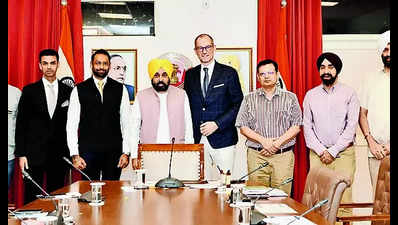You might want to sit down for this, unless it is a window seat on a Boeing aeroplane. New Delhi: The main question here is about the culture of engineering at Boeing, and if the company is even oriented towards safety after the nightmare that Muilenburg left the company in. This lack of trust in Boeing to get even the basics right is bleeding over to the Boeing Starliner mission, in a totally different domain, where the general public at least trusts a little bit in NASA to handhold this wayward private company through the rigorous testing requirements of NASA, but here, NASA themselves do not have a great track record, especially when it comes to private suppliers.
There is no miscommunication or lack of transparency, and that is not what Boeing needs to do better. Boeing needs to commit better, repair better, maintain much better, regain trust, and make absolutely sure anything that comes out with your branding on it, actually works. That is not the case this time, again.

When the global media pulls NASA and Boeing Down for not sticking to their original mission plan, it is a justified question, even though NASA and Boeing triple underlined the fact that this was supposed to be a minimum 8 day mission that has been extended indefinitely. Space missions are meant to be precisely planned, this is the bare minimum expectation for space travel. It’s great that more science was done, but stay focused on the Starliner, and the engineering culture at Boeing.
We, the entire planet, feel like you, the Boeing and NASA people are playing with the lives of two astronauts while you try to figure out a problem that you do not know how to fix. Well, have you figured it out? Yes? No? Maybe? We are looking for a return date. Do not pretend for a second that it is all fine, and you have the luxury of time.
Program manager for NASA’s Commercial Crew Program said, “We don’t have an announcement today relative to a return date. Uhhhh..
. we’re making great progress, but we are just not quite ready to do that hmmph. We are here to be open and transparent and talk about you know all the great learning that’s happened.
” Boeing decided to extend the mission indefinitely to conduct a comprehensive testing of the reaction control thrusters housed in the service module, which will burn up on reentry. At the White Sands facility in New Mexico, the entire sequence of firings from the deployment after launch were conducted, in a vacuum environment, that also simulated the influence of solar radiation. A number of problems developed on the Sun-facing side of the spacecraft.
The testing also included the burns for the next phase of the mission, which is the undocking and return to Earth. The Boeing engineers crossed off fields a complex tree diagram of potential problems to identify the fail conditions that they could fix permanently for future Starliner flights. They basically busted a future thruster on the ground to find out how it could perform in extreme situations.
Well, the testing could replicate the same kind of thrust degradation that is being observed on the actual Boeing Starliner. NASA is attempting to understand the problem better by disassembling the busted thruster. This is actually brilliant, because they cannot do it on the actual Service Module, but the testing is revealing what engineers would find out if they had magical access to it.
Manual control put stress on the thrusters The Boeing Starliner is meant to be autonomous, but has a provision for manual control when the situation demands it. Apparently, manual control put more stress on the thrusters, according to the testing. So Sunita Williams, the Pilot, and Barry Wilmore, the Commander of the Boeing Starliner Crew Flight Test will have reduced options for manual control during the next phase of the mission, which is the undocking and return.
Mark Nappi, the Starliner Programme manager for Boeing had something totally obtuse and unrelatable to start with, “The last time we talked to you, we had 33 actions to complete in order to get to a place where we thought we had a good vehicle to come home and we could learn something about the root cause.” Nappi went on to clarify that the Boeing Starliner is ready to come home and that Boeing has identified faulty connectors in the propulsion system, with the Teflon seals deforming in the microgravity environment of space. Boeing wants to now conduct an additional round of tests on the Boeing Starliner to ensure that it performs as the ground teams expect, and evaluate the status of the helium tank leaks.
The findings of this test will be shared with NASA, after which a decision will be taken on the timing of the return of the Boeing Starliner..


















